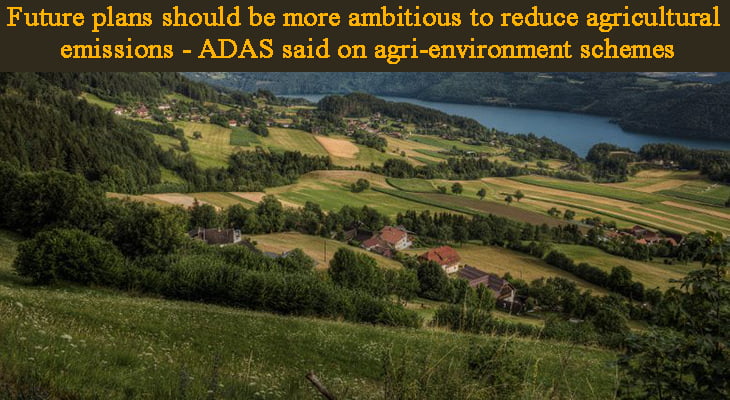Future plans should be more ambitious to reduce agricultural emissions – ADAS said on agri-environment schemes
In its assessment report on the GLAS scheme, a UK-based agriculture consultancy suggested that future agri-environment initiatives be better aimed at dairy and arable areas.
ADAS, the agricultural consultancy, proposed that future plans should be more appropriate to reduce agricultural emissions by 2030.
Scaling up tree and hedge planting, restoring common peatland, re-watering wetlands and re-vegetating bare peat have been suggested.
ADAD said that: “Participation of more intensive farms would increase greenhouse gas mitigation, though uptake of fertiliser reduction.”
ADAS had called for a review of the overall balance of CAP funding to mitigate the adverse environmental impacts of the agricultural sector and promote public good.
Some of the other suggestions put forward by ADAS include:
● New actions could include supporting pollinators on farmland
● Payment rates vary, for example according to whether catch crops are grazed or not
● Low input permanent pasture payments could vary from arable to dairy farms to others
● Bird action payments could be linked to the latest bird population data.
● Water, landscape, nesting/roosting features, catch crops and rare breeds actions which were in GLAS be moved into an eco-scheme in the next CAP
● Uptake could be aimed at farms in fragile water catchments or where habitats/birds are at risk
● Moving incentives for technology uptake (minimum tillage and low emission slurry spreading) to an eco-scheme
Some of these recommendations may be incorporated in the Government’s latest pilot project aimed at farmers not currently in the GLAS.
The ADAS proposal for compulsory fencing of livestock farms in high-status water areas is already in effect on more intensive farms. The next deadline to exclude cattle from the watercourses by setting up fences is 1 January.
The UK-based agriculture consultancy also posed a major question as to whether to improve incentives to reduce pollution or whether the polluter pays approach should be implemented, to make polluters internalise the costs of usage or destruction of environmental resources, rather than enabling society to bear costs after the harm has been done.


Comments are closed.